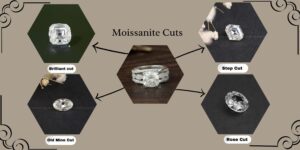EE Basic V2 Short: Simplifying Electronics for Beginners

In today’s fast-paced digital world, understanding the basics of electronics has become crucial for anyone who wishes to navigate through the intricacies of modern technology. Electronic devices are an integral part of our lives, from smartphones to laptops, and having a grasp of the fundamentals can empower individuals to make informed decisions and even venture into the exciting realm of electronics as a hobby or profession.
The Building Blocks of Electronics (H2)
1. Voltage and Current (H3)
1.1 What is Voltage? (H4)
Voltage is the potential difference between two points in an electric circuit. It is responsible for pushing electric charges, allowing the flow of current.
1.2 Understanding Current (H4)
Current is the flow of electric charges through a conductor. It is measured in amperes (A) and plays a pivotal role in determining how much charge is moving through a circuit.
2. Components and Circuits (H3)
2.1 Resistor, Capacitor, and Inductor (H4)
These are the fundamental passive components used in electronic circuits. Resistors limit current flow, capacitors store and release energy, and inductors resist changes in current.
2.2 Types of Circuits (H4)
Electronics utilize various types of circuits, including series, parallel, and combination circuits, each with unique properties and applications.
Diving Deeper: Components and Applications (H2)
3. Diodes and Transistors (H3)
3.1 Diodes: One-Way Traffic (H4)
Diodes are essential semiconductor devices that allow current to flow in only one direction. They’re used in rectification, signal modulation, and voltage regulation.
3.2 Transistors: Switches and Amplifiers (H4)
Transistors act as electronic switches or amplifiers. They form the basis of digital logic gates and are vital in modern computing and communication systems.
4. Integrated Circuits (H3)
4.1 What are ICs? (H4)
Integrated Circuits, or ICs, are compact arrangements of multiple electronic components on a single chip. They revolutionized electronics by enabling miniaturization and enhanced performance.
4.2 Types and Applications of ICs (H4)
ICs come in various types, including microcontrollers, microprocessors, and memory chips. They find applications in smartphones, computers, medical devices, and more.
Exploring EE Basic V2 (H2)
5. Introducing EE Basic V2 (H3)
5.1 What is EE Basic V2? (H4)
EE Basic V2 is an interactive online platform designed to teach electronics from scratch. It provides hands-on experience through simulations and practical exercises.
5.2 Features of EE Basic V2 (H4)
The platform offers comprehensive lessons, interactive simulations, and quizzes to ensure effective learning and retention of electronic concepts.
6. Benefits and Impact (H3)
6.1 Empowering Beginners (H4)
EE Basic V2 empowers beginners by breaking down complex concepts into simple, relatable terms, fostering a deep understanding of electronics.
6.2 Bridging the Knowledge Gap (H4)
The platform bridges the gap between theoretical knowledge and practical application, equipping learners with skills applicable to real-world projects.
Conclusion
In a world where electronics are the backbone of innovation, understanding the basics becomes indispensable. EE Basic V2 serves as a stepping stone for individuals looking to explore electronics with confidence. By simplifying intricate concepts, the platform propels beginners towards unlocking a world of possibilities.








